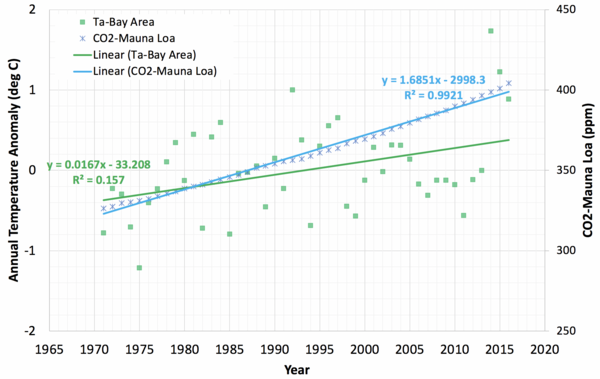The impact of timing and magnitude of the El Niño- Southern Oscillation on local precipitation levels and temperatures in the Bay Area
(1) Monta Vista High School, (2) National Severe Storms Lab
https://doi.org/10.59720/20-173
In this study, we analyzed temperature, Multivariate El Niño-Southern Oscillation Index (MEI), and Standard Precipitation Index (SPI) data from the San Francisco Bay Area from 1971 to 2016. We also analyzed CO2 records from Mauna Loa, HI for the same time period, along with the annual temperature anomalies for the Bay Area. Understanding the relationships between temperature, MEI, SPI, and CO2 concentration is important as they measure the major influencers of California’s regional climate: temperature, ENSO, precipitation, and atmospheric CO2. Thus, measurements of the three variables are key indicators of long term trends in climate, and can reveal the exact effect anthropogenic climate change is having on the Bay Area’s climate. Our research question was whether there is a correlation between temperature, MEI, SPI, and atmospheric CO2 within the Bay Area. We found that there was a clear correlation between warm anomalies and high MEI/low SPI in the period of 2013–2016, however only when both were historically significant. Also, MEI levels in general were highly correlated with temperature, showing that the local temperature anomalies in the Bay Area are significantly influenced by the El Niño-Southern Oscillation (ENSO) cycle. The influence of precipitation on the local temperature anomalies was limited, however. Finally, although there was not a statistically significant link between the atmospheric CO2 concentration at Mauna Loa, HI and the temperature anomalies in the Bay Area, the consistent increase in CO2 concentration could have had an impact on the overall increase in annual temperature anomalies from 1971 to 2016.
This article has been tagged with: